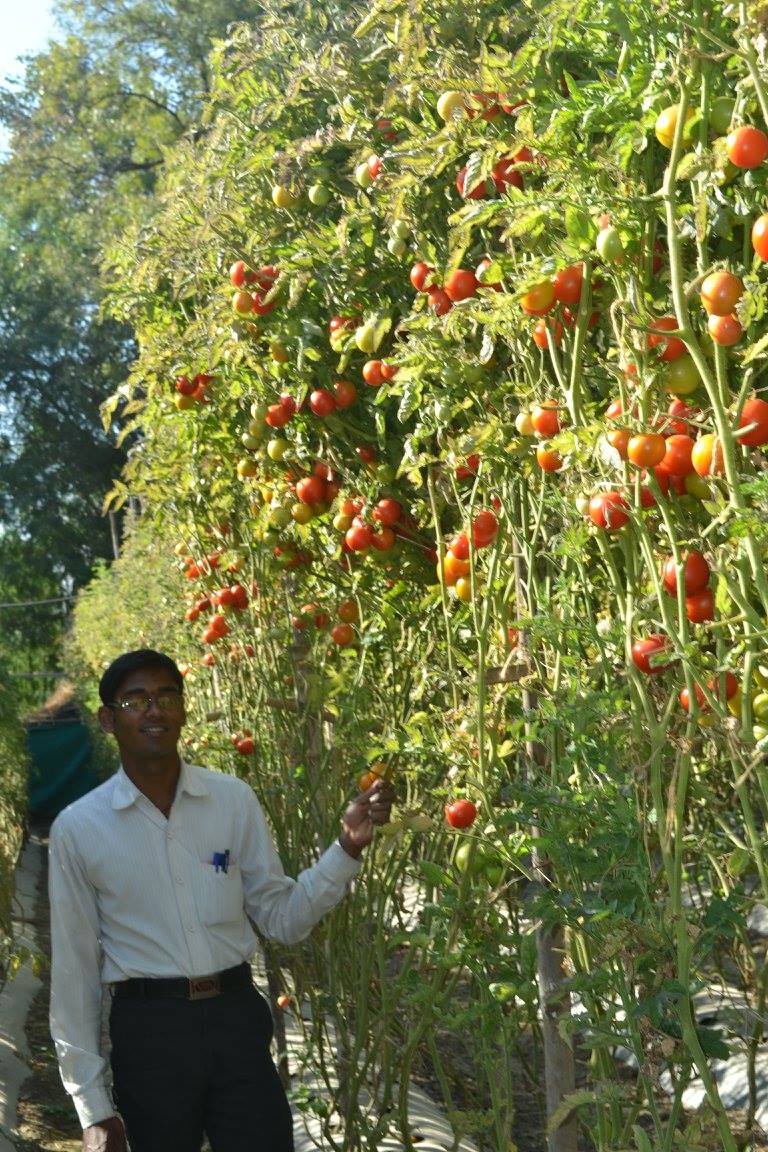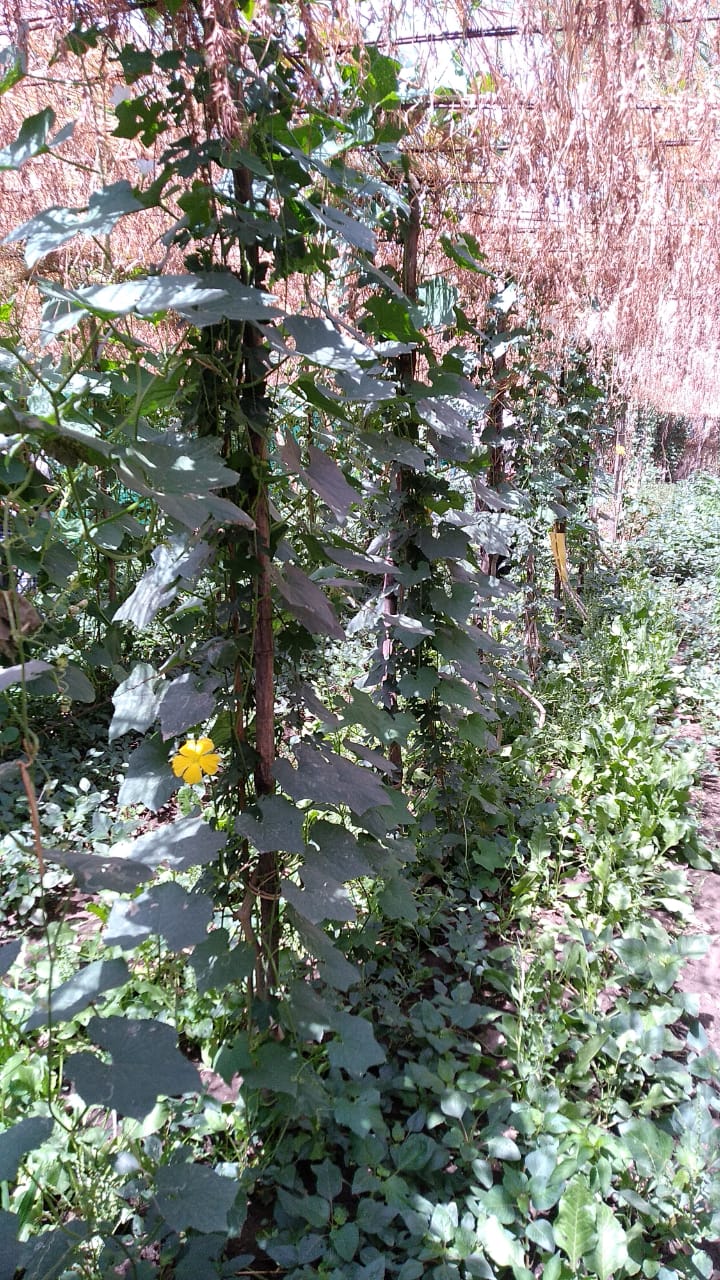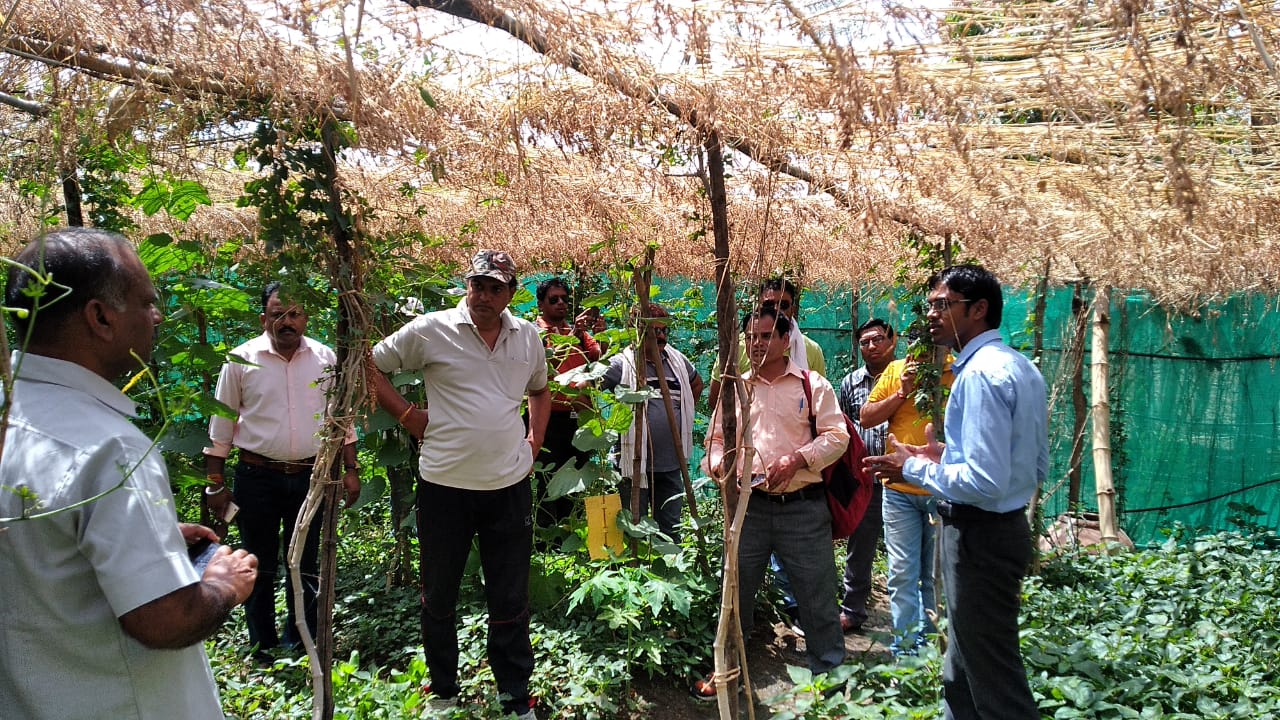MP Farmer Grows Chemical-Free Food in 5 Layers, Earns Millions From Just 2.5 Acres!
Today, spread on a 2.5-acre plot lies a five-layered model economically-viable and sustainable farm, the fruit of Akash's labour.

Jaisa khaaoge ann, waisa hoga mann, jaisa hoga mann, waisa hoga tann,” Akash Chourasiya is a firm believer of this age-old Bundelkhand expression.
Born to a family of beetle farmers who made a living from beedi-making in the village of Tilli in Sagar district of Bundelkhand, he wanted to pursue a medical degree to help people around him to lead healthy lives. But during the preparation for AIIMS, he realised it wouldn’t help him attain his objective.
“Many who enter the profession have their own aspirations like building a better life, drawing a hefty annual package or setting up a private facility. I realised it wouldn’t be my best option to ensure better healthcare for people. I believed that a person’s health is directly connected to the food on their plate. So, my ambition became to help chemical-free food reach people’s plates.”
At the time, he was only 20, so his decision to quit his medical preparation drew the ire of family and friends alike. But Akash was undeterred and began to work towards the Bundelkhandi expression.
Today, spread on a 2.5-acre plot lies a five-layered model economically-viable and sustainable farm, the fruit of Akash’s labour.

Apart from fulfilling his vision of growing chemical-free food, the innovative farming technique has turned the 29-year-old progressive farmer into a millionaire, who now earns Rs 12-15 lakh a year!
In an exclusive interview with The Better India, the young organic farmer from Madhya Pradesh recalls his long journey.
“When I decided to quit medicine and pursue agriculture, I faced a lot of struggle. Though my family was unhappy with the switch, they supported me. I lost a few friends along the way, but I was determined to build a model that could ensure clean produce and a sustainable income.”
Starting 1 June 2011, the first six months were particularly difficult. Organic tomatoes were the first crop he experimented with.
Generally, a tomato crop starts fruiting within 50-60 days. But for Akash, then 20, six months passed with no results. Just as doubting Thomases pointed their fingers, the crop bore fruit.
And the results haven’t stopped till date.

“The tomato crop that I experimented with grew 15 feet tall, where we harvested 10-12 kg from a single plant. The size, taste, and quality of the fruit were so astounding that it drew a lot of attention. One of the PhD professors at my university even encouraged his students to visit my farm and understand how I made it possible.”
During his research about progressive agriculture techniques, Akash came across two-layer farming. This was a method where two kinds of crops would be grown in the same unit of land at different layers.
Finding success in this method, he started adding layers to his farm year on year. Today, in a small plot of 2.5 acres, his farm grows crops in five layers!
So how does it work?

He answers, “We start by planting the first layer, which is underneath the surface of the soil. At a depth of two inches, I planted ginger and covered it with mud.”
The next layer, just above the soil is green, leafy vegetables. While Akash grows amaranthus, you can opt for other greens like fenugreek, spinach, or coriander, which will cover the soil within 15-20 days. This prevents weeds from sabotaging the growth of crops, thereby saving labour, time, money and effort on de-weeding.
When the time for harvest is near, the farmer doesn’t cut the leaves; he uproots the plant from the soil. This loosens the topsoil and helps sunlight and oxygen penetrate deeper and better, improving soil health and making the crop beneath the surface, stronger.
If the roots are not uprooted, they can interfere with the growth of the underground crop, in this case, ginger.
“The method cannot be practised in an open field, so a structure that uses bamboo for support, and wild grass for the roof, is set up to protect the crop from extreme climate changes. The shed substitutes the need for expensive polyhouses. It is weather-proof and biodegradable. It also protects crops from extreme heat, ground frost, and hailstorms. The balance of light and shade helps slow down the process of evaporation too. So, the soil can retain more water, thereby making the process more water-efficient. The leafy greens, too, retain their quality and shine,” he explains.
The bamboo structure also serves as a support for another layer of crops which include climbers. The tallest layer includes papayas that are planted at a distance of 12 x 18 feet that tower over the shed.

Lastly, the fifth layer includes creepers that are grown on a mesh of wires woven from the roof of the shed to the ground. These may include bitter gourd, bottle gourds, ridge gourd or snake gourd.
“It helps build a biodiverse ecosystem. Much like multi-story buildings in cities, this model enables multi-layer farming in a limited space. It cuts down investment costs drastically, helps you use space efficiently so that you can replicate the production of a regular five-acre land in one acre,” he says.
How does it cut down investment costs?

The general cost of setting up the shed using bamboo and wild grass could be in the vicinity of Rs 1.5 lakh per acre, required once every five years. For Akash’s plot, this investment for the shed comes up to Rs 1.25 lakh since the materials are locally-grown or sourced.
The five-layer technique ensures that the farmer has a steady source of income year round as the crops are harvested through different seasons.
“Even if you were to add the cost of labour or my family’s cost of living, we spend about Rs 4-5 lakh a year. So, when I earn an annual income of Rs 12-15 lakh, my net profit is between Rs 8-11 lakh a year!”
Using the five-layer method, Akash claims to have made a gross profit of Rs 10.5 lakh from one acre of land, with a net profit of Rs 7 lakh.
An additional source of income is producing and selling vermicompost and milk. He makes different kinds of compost, one of which uses 75 per cent cow dung and 25 per cent rock phosphate; while another utilises farm and kitchen waste.
He produces 40 tonnes of vermicompost per year, of which five tonnes is used on the farm. The remaining 35 tonnes are sold for Rs 5,000 per tonne.
“To summarise, you are cutting down your investment ten times and multiplying your profits ten times. In a country like India, where marginal farmers with landholdings smaller than two acres are a majority, the method of minimal investment could be the answer to a decent standard of living.”
You May Also Like: Woman Quits Cushy US Job to Go Organic, Transforms Farm into 10-Acre Food Forest!
Another method of cutting down costs is the use of indigenous seeds over GMO seeds that industries sell at exorbitant prices. Indigenous seeds are resilient to weather, fruit for longer durations, and are less prone to pest attacks.
Even the use of water is efficient since multi-layer farming saves 90 per cent water and uses the same amount of water as required by a single crop, but is used to grow five crops.
Due to the nature of the plantation, pest attacks are minimal, therefore, no chemicals are used to control them. The farm either has crop guards which are yellow and blue sheets, smeared with mustard oil and jaggery to trap flying insects so that they do not reproduce. Biopesticides are generally not required, but when in need, these too are brewed on the farm. While one concoction mixes 60-day old buttermilk with ginger, dry chillies and garlic, other methods include spraying neem oil.
He is also committed to sharing his knowledge through free training sessions and workshops to help other farmers benefit. Since 2013, he has trained close to 48,000 farmers and told them about 12-15 combinations of crops that are suitable for multi-layer farming.
He has also created a seed bank with like-minded farmers to preserve and multiply indigenous varieties. The process works in two ways—a farmer can take seeds from the bank, multiply them and return twice the number of seeds the following year. But if he is unable to multiply them, he has to pay the price, so that more seeds can be bought and given to other farmers.
Today, this network of farmers trading indigenous seeds is close to 3,500.

Akash has also built a pit 10 x 10 feet wide and 10 feet deep near the field to prevent the topsoil from running off in the monsoons. This pit is filled with vermicompost or earthworms, with small plants planted around its boundaries.
During the monsoon, not only does it help recharge groundwater but also collects fertile soil that would otherwise run off.
“These pits help prevent 4,000 kg of soil and 8-10 lakh litres of water from running off each year. We have set up 24,000 such recharging pits for farmers across the country,” he says.
In his final message to farmers, he says, “Please stop adding poison to your fields. Earlier, families in Punjab sent one child to serve the nation. Similarly, I request you to encourage at least one of your children to take up agriculture. When youth take up farming, we can prove to the world that India, with its favourable climate and abundant natural resources, can become a sone ki chidiya yet again.”
If this story inspired you, get in touch with Akash on 91790 66275.
(Edited by Shruti Singhal)
Like this story? Or have something to share?
Write to us: [email protected]
Connect with us on Facebook and Twitter.
If you found our stories insightful, informative, or even just enjoyable, we invite you to consider making a voluntary payment to support the work we do at The Better India. Your contribution helps us continue producing quality content that educates, inspires, and drives positive change.
Choose one of the payment options below for your contribution-
By paying for the stories you value, you directly contribute to sustaining our efforts focused on making a difference in the world. Together, let’s ensure that impactful stories continue to be told and shared, enriching lives and communities alike.
Thank you for your support. Here are some frequently asked questions you might find helpful to know why you are contributing?


This story made me
-
97
-
121
-
89
-
167













